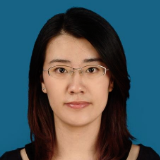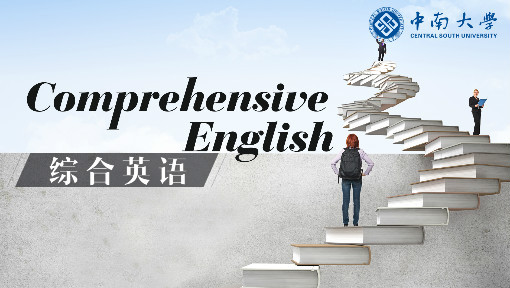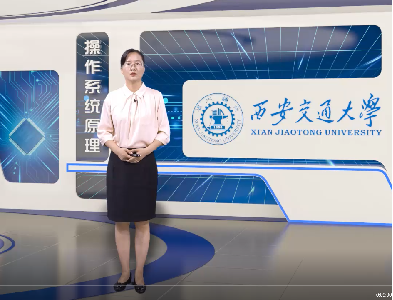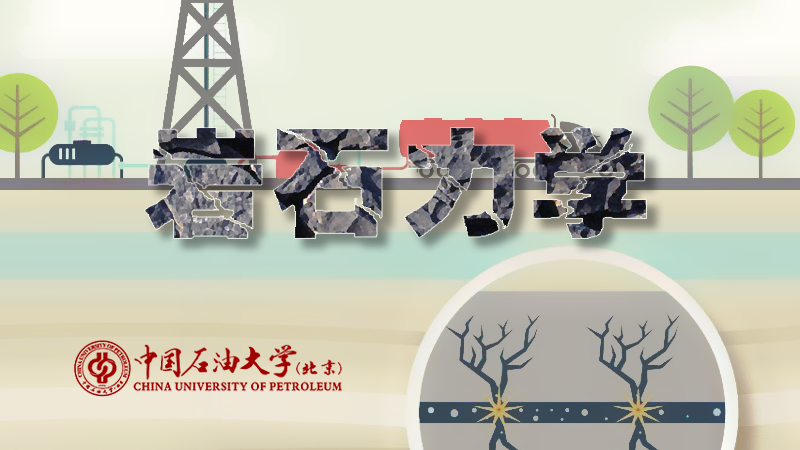
结构力学课程:前往报名学习
Structural Mechanics is a major course for undergraduate students of civil and hydraulic engineering, which lays a good foundation for learning relevant professional courses, conducting structural design and scientific research, and cultivating the ability of structural analysis and calculation. The course offered by DUT is awarded national level excellent course in China.
开设学校:大连理工大学;学科:理学、
Structural Mechanics is a major course for undergraduate students of civil and hydraulic engineering, which lays a good foundation for learning relevant professional courses, conducting structural design and scientific research, and cultivating the ability of structural analysis and calculation. The course offered by DUT is awarded national level excellent course in China.
-1.1 Structures and structural mechanics
--Video
-1.2 Computing models and principles
--Video
-1.3 Classification of framed structures
--Video
-1.4 Classification of loads
--公告
-Courseware
-2.1 Basic concepts
--2.1 Purpose of geometric construction analysis
--2.2 Geometrically table and unstable systems
--2.3 Degrees of freedom and constraints-1
--2.4 Degrees of freedom and constraints-2
-2.2 The Calculating Degrees of Freedom
--2.5 Calculating DOF and two formulae
--2.6 Examples for calculating DOF
--2.7 Necessary condition of geometrically stable systems
-2.3 Geometric Construction Rules
--2.8 Geometric construction rules based on hinged triangle
--2.9 Restrictions of geometric construction rules
--2.10 Application of Geometric Construction Rules
--2.11 Discussion of virtual hinges at infinite distance
-2.4 Relationship between Geometric Construction and Equilibrium Equations
--2.12 Relationship between geometric constructions and equilibrium equations
-Courseware
-Unit testing
--Chapter 2 Geometric Constru...
-3.1 Review the analysis of single span beams
--3.1 Review of the analysis of single span beams-1
--3.2 Review of the analysis of single span beams-2
-3.2 Construction of internal force diagrams by principle of superposition
--3.3 Construction of bending moment diagrams by principle of superposition
--3.4 Construction of shear force diagrams and solution of reactions
--3.5 The analysis of simply supported inclined beams
-3.3 Analysis of statically determinate multi-span beams
--3.6 Geometric construction and characteristic of statically determinate multi-span beams
--3.7 Calculation of internal forces for statically determinate multi-span beams-1
--3.8 Calculation of internal forces for statically determinate multi-span beams-2
--3.9 Comparison of three types of beams
-Courseware
-4.1 Classification and characteristic of plane statically determinate rigid frames
--4.1 Classification and characteristic of plane statically determinate rigid frames
-4.2 Calculation of statically determinate plane frames
--4.2 Calculation of reactions for statically determinate plane frames
--4.3 Construction of M diagram for frames-1
--4.4 Construction of M diagram for frames-2
--4.5 Construction of shear force diagrams and axial force diagrams for frames
-Courseware
-Unit testing
--Unit texting
-5.1 Classification and characteristic of plane arches
--5.1 Classification and characteristic of plane arches
-5.2 Calculation of flat arches
--5.2 Calculation of flat arches-1
--5.3 Calculation of flat arches-2
-5.3 Calculation of arches with ties
--5.4 Calculation of arches with tie and oblique arches
-5.4 Rational axial line
--5.5 Rational axial line of flat arches
-Courseware
-6.1 Calculation of trusses
--6.1 Assumptions and classification of determinate plane trusses
--6.2 Calculation of internal forces by the method of joints
--6.3 The method of axial force coefficients
--6.7 Qualitative analysis of several trusses
-6.2 Calculation of composite structures
--6.8 Calculation of internal forces for composite structures
-Unit testing
-Courseware
-7.1 General remarks on statically determinate structures
--7.1 General remarks on statically determinate structures
-7.2 Principle of virtual work for rigid bodies
--7.2 Principle of virtual work for rigid bodies
--7.3 The method of unit virtual displacement
-Unit testing
--Chapter 7-Unit testing
-8.1 Introduction
--8.1 Introduction for calculation of structural displacement
-8.2 Calculation of displacements for rigid body systems
--8.2 The method of unit virtual load
-8.3 Principle of virtual work for deformable bodies and general equation of displacements
--8.3 The principle of virtual work for deformable bodies and appropriate conditions
--8.4 The general equation of displacements
-8.4 Displacements calculation of various types of structures due to external loads
--8.5 Formula for calculating displacements caused by loads
--8.6 Displacement calculation of various types of structures due to external loads-1
--8.7 Displacement calculation of various types of structures due to external loads-2
--8.8 Discussion on beam-typed members-1
--8.9 Discussion on beam-typed members-2
--8.4-Unit testing
-8.5 The graph-multiplication method
--8.10 The graph-multiplication method
-8.6 Calculation of displacements caused by other factors
--8.11 Calculation of strains caused by temperature changes
--8.12 Calculation of displacements caused by temperature changes
--8.13 Calculation of displacements caused by support movement and manufacture error
--8.14 Calculation of generalized displacements
--8.6-Unit testing
-8.7 Reciprocal laws for linear elastic system
--8.15 Reciprocal laws for linear elastic systems
--8.16 Application of the law of reciprocal work-1
--8.17 Application of the law of reciprocal work-2
--8.7-Unit testing
-Midterm Exam
-9.1 Determination of degrees of indeterminacy
--9.1 Determination of degrees of indeterminacy
-9.2 Basic concepts of force method
--9.2 Basic idea of force method
--9.3 Canonical equations for structures with n degrees of indeterminacy
-9.3 Calculation of internal forces for statically indeterminate beams, rigid frames and bent frames
--9.4 Calculation of internal forces for statically indeterminate beams under the action of loads
--9.5 Calculation of internal forces for statically indeterminate rigid frames and bent frames under t
-Unit testing-1
-9.4 Calculation of internal forces for statically indeterminate trusses and composite structures
--9.6 Calculation of internal forces for statically indeterminate trusses under the action of loads
--9.7 Calculation of internal forces for statically indeterminate composite structures under the actio
-Unit testing-2
-9.5 Calculation of statically indeterminate structures cause by other factors
--9.8 Calculation of internal forces for statically indeterminate structures due to temperature change
--9.9 Calculation of internal forces for statically indeterminate structures due to support settlement
-9.6 Calculation of symmetric structures
--9.10 No bending moment status
--9.11 Symmetry of structures and loadings
--9.12 Characteristic of symmetric structures
--9.13 Simplification of symmetric structures
-Unit testing-3
-10.1 Basic concepts of displacement method
--10.1 Basic concepts of displacement method
--10.2 Basic idea of displacement method
-10.2 Primary unknowns of displacement method
--10.3 Primary unknowns of displacement method
-Unit testing-1
-10.3 Slope-deflection equations of uniform beams
--10.4 Slope-deflection equations of uniform beams
-10.4 The primary methods
--10.5 The method of equilibrium equations
--10.6 The method of typical equations
-Unit testing-2
-10.5 Analysis of structures without sidesway due to external loads
--10.7 Analysis of structures without sidesway due to external loads
-10.6 Analysis of structures with sidesway due to external loads
--Analysis of structures with sidesway due to external loads
-Unit testing-3
-11.1 Basic concepts of moment distribution method
--11.1 Displacement method and moment distribution method
--11.2 Basic concepts of moment distribution method
--11.3 Application of moment distribution at a single joint
-11.2 Moment distribution at multi-joints
--11.4 Moment distribution at multi-joints
--11.5 Application of moment distribution at multi-joints-1
--11.6 Application of moment distribution at multi-joints-2
-11.3 No-shear moment distribution method
--11.7 Application condition of no-shear moment distribution method and determination of fixed-end mom
--11.8 Determination of stiffness factors, distribution factors and carryover factors
--11.9 Application of no-shear moment distribution method
硕士生导师,慕课《结构力学》主讲教师,辽宁省教学团队工程力学团队成员,2014年获得全国结构力学与弹性力学课程青年教师讲课竞赛第一名,2010-2016年,获得过国家、协会及市、校级讲课竞赛一等及二等奖多次, 2012年被评为建设工程学部中国路桥—榜样在身边“我最喜爱的老师”称号。
博士生导师,土木水利实验教学(国家级)示范中心主任;教育部高等学校力学基础课程教学指导委员会委员;以第一获奖人获国家教学成果一等奖1项,辽宁省教学成果一等奖2项;以主要获奖人获获国家教学成果一等奖1项,辽宁省教学成果一等奖2项、二等奖2项。荣获全国师德标兵、国务院政府特殊津贴、辽宁省教学名师、辽宁省优秀教师等荣誉称号。
黄丽华,大连理工大学建设工程学部教授,工程力学研究所所长,辽宁省教学团队“工程力学”主要成员,辽宁省精品课程“工程力学”课程主要完成人。主讲过理论力学(中英文)、材料力学(中英文)、工程力学、高等材料力学等课程。曾获宝钢教育基金优秀教师奖,辽宁省优秀青年骨干教师,大连理工大学教学名师,教学质量优秀奖等荣誉。 她主持省部及校级教改项目20余项,她带领团队多次获省部及校级教学成果奖。主编教材5部,发表教学、科研论文60余篇。
大连理工大学建设工程学部讲师,硕士生导师,慕课《工程力学》、《结构力学》主讲教师,毕业于清华大学,主要科学研究方向为高阶方法和有限元。







